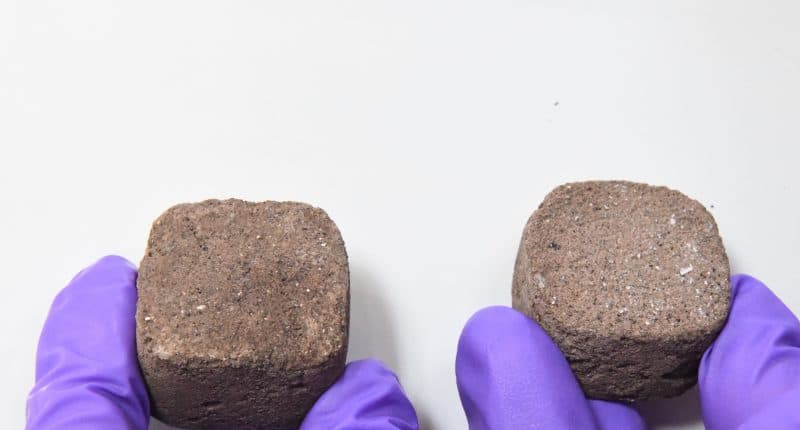There is time for the colonization of Mars to become reality. And Elon Musk and his SpaceX are busy building heavy, long-range rockets to take us to the red planet, one of the most basic problems already that would come up upon our arrival, seems to have been taken care of. The problem of building human settlements and other critical infrastructure.
In a development that is sure to go down in the pages of the history of man’s conquest of space, the Indian Institute of Science (IISc) has developed a sustainable method that will create solid bricks from Marian soil, with the help of bacteria and urea. The institute has developed this in collaboration with the Indian Space Research Organization (ISRO).
In a press release, the IISc said that these “space bricks” could be used to construct building-like structures to facilitate human settlement on our neighbouring planet. Of course, it still needs to be seen whether these “space bricks” hold up on the red planet, whose soil is notoriously toxic and whose atmosphere is mostly made up of carbon dioxide and is 100 times thinner than that of Earth’s.
Nonetheless, bricks made by IISc using Martian soil, bacteria, and urea have reduced porosity, something that was not achievable when other methods were used to consolidate Martian soil into bricks. Porosity is the volume of pores within a brick and influences the brick’s compressive strength, permeability, and absorption of water. It is expressed as a percentage of the total volume of the brick.
“The bacteria seep deep into the pore spaces, using their own proteins to bind the particles together, decreasing porosity and leading to stronger bricks,” said Aloke Kumar, Associate Professor in the Department of Mechanical Engineering at IISc.
This begs the question, how did the IISc and ISRO get their hands on Martian soil in the first place? The answer is that they did not. They used a Martian soil simulant, which was procured from Florida. The simulant was mixed with guar gum (a fibre extracted from the guar bean), urea, and nickel chloride, along with the bacterium Sporosarcina pasteurii.
This creates a slurry, which can then be poured into moulds of any shape and size. Credit for the casting of the slurry goes to Koushik Viswanathan, Assistant Professor in the Department of Mechanical Engineering, IISc. The group has had a history of creating bricks, ideally suited for building settlements in space. They had earlier created similar bricks from lunar soil.
Over the next few days, the bacteria convert the urea into crystals of calcium carbonate, which (along with biopolymers secreted by the microbes) act as the de-facto ‘cement’ that holds the soil particles together.
The peer-reviewed scientific journal PLOS One has published a study that outlines the method for making the space bricks.
Going forward, the group intends the find out how the Martian atmosphere and low gravity will affect the strength of the space bricks. The Martian atmosphere will be simulated using the device MARS (Martian AtmospheRe Simulator).





